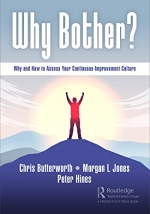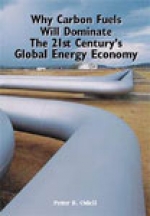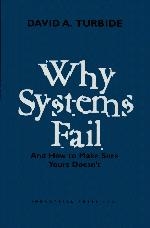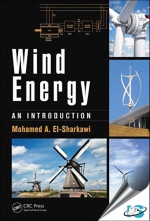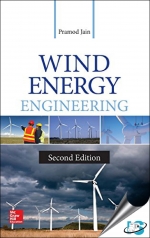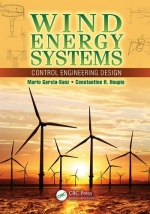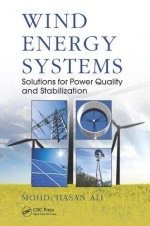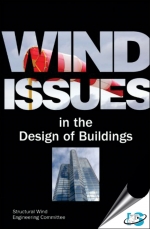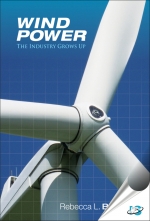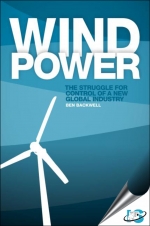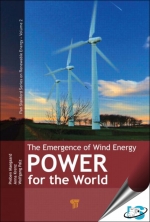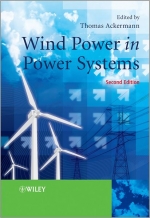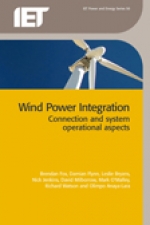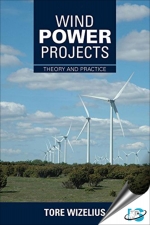Site Breadcrumb
Total Record : 10230
ISBN: 1032028289 / 9781032028286
Year: 2021
Availability: 2 to 3 weeks print-
This book focusses on the importance of creating an internal assessment program to periodically assess the maturity of the organizations transformation journey. It discusses the best approach to designing and implementing an assessment program by answering key questions posed when people resist.
The book begins with selecting the positioning of the program not as an audit but as an opportunity to review strengths and opportunities, through to selecting senior leader support to design of the program and developing the assessors. More than 10 case studies are documented to show how organizations have approached their assessment programs, lessons learned, and successes and challenges faced.
The book leads the reader through the process of selling the concept and importance of transformation and Lean assessments to embed the desired behaviors within workplace culture. With many case studies, the reader is guided to design their own programs and develop their own assessors. This increases the probability of sustainability of the transformation program by focusing on and maturing the behaviors the transformation programs are trying to drive.
For example, one of the most well-known assessments is the Shingo prize -- This book explains the thinking behind the Shingo model and shares examples of assessments that support it. Other examples of assessments are covered, such as process maturity, quality and business assessments.
This book focusses on the importance of creating an internal assessment program to periodically assess the maturity of the organizations transformation journey. It discusses the best approach to designing and implementing an assessment program by answering key questions posed when people resist.
The book begins with selecting the positioning of the program not as an audit but as an opportunity to review strengths and opportunities, through to selecting senior leader support to design of the program and developing the assessors. More than 10 case studies are documented to show how organizations have approached their assessment programs, lessons learned, and successes and challenges faced.
The book leads the reader through the process of selling the concept and importance of transformation and Lean assessments to embed the desired behaviors within workplace culture. With many case studies, the reader is guided to design their own programs and develop their own assessors. This increases the probability of sustainability of the transformation program by focusing on and maturing the behaviors the transformation programs are trying to drive.
For example, one of the most well-known assessments is the Shingo prize -- This book explains the thinking behind the Shingo model and shares examples of assessments that support it. Other examples of assessments are covered, such as process maturity, quality and business assessments.
ISBN: 0906522226 / 9780906522226
Year: 2004
Availability: In Stock print-
Global energy demand has grown only slowly since the mid-1970s. This is predicated to continue, even without actions to limit/reduce CO2 emissions. Nevertheless, increasing energy use is required to eliminate energy poverty, not only for the 2 to 3 billion of the world's present population which suffer from the condition, but also for the net additional 3 billion inhabitants of planet earth by 2050. Sustainability for a more populous 21st century world depends on this development.
Carbon fuel use since 1970 has been much below expectations at that time. Consequently, proven reserves have expanded to an all-time high. These provide a secure base for supply growth of coal, oil and gas. Collectively their present 90% share of global energy use will decline only very slowly, viz. to 80% by mid-century and still over 55% by 2100.
Conventional expectations for a high growth rate in coal's use are unrealistic. At most, its contribution to fossil fuel supplies will be 30%. Thus hydrocarbons will remain dominant supplying over 50% of global energy use until post-2070. But their relative contributions will change dramatically. As gas supply grows more than five-fold over the century, it will contribute 57% of hydrocarbons supply (oil; 43%). Gas will overtake coal by 2010 and oil by 2040. Conventional and non-conventional gas reserves and resources will be adequate to maintain gas as a growth industry until post-2090 - even without a contribution from gas hydrates and geo-pressured gas.
Oil supply will likely be more demand than resources constrained - given the demand-side preference for gas for technical and commercial, as well as environmental, reasons. The remaining 2000x109 barrels of recoverable conventional oil resources will sustain over 50% of oil demand until almost 2060. Thereafter non-conventional oil will take the leading role. The latter's output will peak only in the penultimate decade of the century and by 2100 its resource-base will be little more than half-depleted. In spite of oil's relative decline as an energy source the industry will, nevertheless, be larger in 2100 than it was in 2000.
The historic and contemporary geo-political significance of the oil industry will, however, be undermined over the coming two decades. Thereafter, with its falling contribution to global energy supply and an increasingly dispersed geographical pattern of production, it will become "just another source of energy" in a competitive market.
Serious medium- to long-term upward pressures on oil and gas prices are unlikely. Higher finding/exploitation costs will be offset by technologically-derived savings. Modest real price increases from post-1986 levels (of 10 to 20% by 2020 and 20 to 30% by 2040) will subsequently be constrained by lower-cost renewable energy supplies.
Finally, what if oil and gas are NOT fossil fuels? As argued by the inorganic origin theorists of the Former Soviet Union - home to the world's largest hydrocarbons' industry. Enormous implications follow from oil and gas being renewable resources. All concerns for "scarcity" would be undermined and future oil and gas supplies at stable or falling costs could be guaranteed.
Global energy demand has grown only slowly since the mid-1970s. This is predicated to continue, even without actions to limit/reduce CO2 emissions. Nevertheless, increasing energy use is required to eliminate energy poverty, not only for the 2 to 3 billion of the world's present population which suffer from the condition, but also for the net additional 3 billion inhabitants of planet earth by 2050. Sustainability for a more populous 21st century world depends on this development.
Carbon fuel use since 1970 has been much below expectations at that time. Consequently, proven reserves have expanded to an all-time high. These provide a secure base for supply growth of coal, oil and gas. Collectively their present 90% share of global energy use will decline only very slowly, viz. to 80% by mid-century and still over 55% by 2100.
Conventional expectations for a high growth rate in coal's use are unrealistic. At most, its contribution to fossil fuel supplies will be 30%. Thus hydrocarbons will remain dominant supplying over 50% of global energy use until post-2070. But their relative contributions will change dramatically. As gas supply grows more than five-fold over the century, it will contribute 57% of hydrocarbons supply (oil; 43%). Gas will overtake coal by 2010 and oil by 2040. Conventional and non-conventional gas reserves and resources will be adequate to maintain gas as a growth industry until post-2090 - even without a contribution from gas hydrates and geo-pressured gas.
Oil supply will likely be more demand than resources constrained - given the demand-side preference for gas for technical and commercial, as well as environmental, reasons. The remaining 2000x109 barrels of recoverable conventional oil resources will sustain over 50% of oil demand until almost 2060. Thereafter non-conventional oil will take the leading role. The latter's output will peak only in the penultimate decade of the century and by 2100 its resource-base will be little more than half-depleted. In spite of oil's relative decline as an energy source the industry will, nevertheless, be larger in 2100 than it was in 2000.
The historic and contemporary geo-political significance of the oil industry will, however, be undermined over the coming two decades. Thereafter, with its falling contribution to global energy supply and an increasingly dispersed geographical pattern of production, it will become "just another source of energy" in a competitive market.
Serious medium- to long-term upward pressures on oil and gas prices are unlikely. Higher finding/exploitation costs will be offset by technologically-derived savings. Modest real price increases from post-1986 levels (of 10 to 20% by 2020 and 20 to 30% by 2040) will subsequently be constrained by lower-cost renewable energy supplies.
Finally, what if oil and gas are NOT fossil fuels? As argued by the inorganic origin theorists of the Former Soviet Union - home to the world's largest hydrocarbons' industry. Enormous implications follow from oil and gas being renewable resources. All concerns for "scarcity" would be undermined and future oil and gas supplies at stable or falling costs could be guaranteed.
ISBN: 0071486151 / 9780071486156
Year: 2007
Availability: 45-60 days print-
The New York Times bestselling guide to getting the best out of every employee-updated for the modern workplace
Based on the actual experiences of 25,000 managers, Why Employees Don't Do What They're Supposed to Do… gives you proven, straightforward methods that work on real jobs, in the real world. This results-oriented guidebook helps you handle the top 10 situations in which employees don't perform the way they should, including a detailed analysis of the causes and the plans for preventing the same problems down the road.
Featuring fresh insights on outsourcing, temp workers, flex time, telecommuting, and technology, this no-nonsense resource arms you with the people-management skills you need to consistently elicit the highest levels of performance from your workforce.
“In simple, straightforward language, Fournies offers practical solutions to the problems of employee performance…[This book] should be on the desk of anyone who manages others.”-Entrepreneur
The New York Times bestselling guide to getting the best out of every employee-updated for the modern workplace
Based on the actual experiences of 25,000 managers, Why Employees Don't Do What They're Supposed to Do… gives you proven, straightforward methods that work on real jobs, in the real world. This results-oriented guidebook helps you handle the top 10 situations in which employees don't perform the way they should, including a detailed analysis of the causes and the plans for preventing the same problems down the road.
Featuring fresh insights on outsourcing, temp workers, flex time, telecommuting, and technology, this no-nonsense resource arms you with the people-management skills you need to consistently elicit the highest levels of performance from your workforce.
“In simple, straightforward language, Fournies offers practical solutions to the problems of employee performance…[This book] should be on the desk of anyone who manages others.”-Entrepreneur
ISBN: 1138303267 / 9781138303263
Year: 2017
Availability: 2 to 3 weeks print-
You have likely heard stories from friends, family members, and colleagues who quit a job because of a toxic person—an individual who belittles, shames, humiliates, shames, or bullies. You may not have realized that these individuals not only take their tolls on our emotional psyches, but the financial outcomes of their organizations as well. Through this book’s many case examples, as well as evidence-based practices and templates, each chapter singles out one main issue and how to resolve it with respect and clarity. Dr. Kusy presents concrete practices that will restore civility and respect into your organization as well as with increased financial performance. Some of these practices include:
- Calculating the real financial cost of toxic people in your organization.
- Providing direct and respectful feedback to a toxic peer, direct report, and even your boss.
- Replacing traditional exit interviews -- that often don’t work very well -- with a method for dealing with toxic chameleons who "knock down and kiss up."
- Hiring, engaging talent, and even firing people based on a new approach to values-based performance management.
You will emerge with a newfound understanding that restores personal well-being and increased financial performance.
- printmohan- nprint-You have likely heard stories from friends, family members, and colleagues who quit a job because of a toxic person—an individual who belittles, shames, humiliates, shames, or bullies. You may not have realized that these individuals not only take their tolls on our emotional psyches, but the financial outcomes of their organizations as well. Through this book’s many case examples, as well as evidence-based practices and templates, each chapter singles out one main issue and how to resolve it with respect and clarity. Dr. Kusy presents concrete practices that will restore civility and respect into your organization as well as with increased financial performance. Some of these practices include:
- Calculating the real financial cost of toxic people in your organization.
- Providing direct and respectful feedback to a toxic peer, direct report, and even your boss.
- Replacing traditional exit interviews -- that often don’t work very well -- with a method for dealing with toxic chameleons who "knock down and kiss up."
- Hiring, engaging talent, and even firing people based on a new approach to values-based performance management.
You will emerge with a newfound understanding that restores personal well-being and increased financial performance.
- printhell ...ISBN: 0831136804 / 9780831136802
Year: 2022
Availability: In Stock print-
A bearing is a common machine element used to constrain motion and reduce friction between moving parts. Bearings are used extensively in global industries, including automotive, construction, power generation, mechanical, chemical, mining, infrastructure, medical, food, etc. The estimated bearing market was valued at $128 billion in 2021, and expected to increase to nearly $227 billion by 2028.
Unfortunately, sometimes bearings fail, and often at the most inopportune time. This is a source of great concern and expense to users, causing downtime and the loss of millions in damages, outages, and lack of productivity. While modern precision manufacturing and maintenance practices have reduced some of the premature failure, they haven’t addressed many of the core problems that lead to bearing failure.
This work presents a collection of different case studies in a multitude of industries where bearings have failed, and includes a failure description, observations, possible reasons for the failure, plausible cause and effect, and then discusses what might have been done to mitigate the problem and, when possible, provides solutions to prevent further failures. The author uses root cause failure analysis and explores such topics as alignment, lubrication, manufacturing defects, mounting practices, contamination, and fatigue. He then explains how one or a combination of these issues worked together to cause the failure, and offers preventive solutions to avoid future problems.
Features
Throughout the book, a classical RCFA approach is used for each case study, using a nine-step analysis with solutions:
- Define the problem
- Get information and input from various sources
- Locate the evidence
- Look for the mistakes
- Ishikawa / Fishbone Diagram
- Getting to the roots
- Solutions
- Create plans to implement the solution
- Monitor the solution and confirm if it works
A bearing is a common machine element used to constrain motion and reduce friction between moving parts. Bearings are used extensively in global industries, including automotive, construction, power generation, mechanical, chemical, mining, infrastructure, medical, food, etc. The estimated bearing market was valued at $128 billion in 2021, and expected to increase to nearly $227 billion by 2028.
Unfortunately, sometimes bearings fail, and often at the most inopportune time. This is a source of great concern and expense to users, causing downtime and the loss of millions in damages, outages, and lack of productivity. While modern precision manufacturing and maintenance practices have reduced some of the premature failure, they haven’t addressed many of the core problems that lead to bearing failure.
This work presents a collection of different case studies in a multitude of industries where bearings have failed, and includes a failure description, observations, possible reasons for the failure, plausible cause and effect, and then discusses what might have been done to mitigate the problem and, when possible, provides solutions to prevent further failures. The author uses root cause failure analysis and explores such topics as alignment, lubrication, manufacturing defects, mounting practices, contamination, and fatigue. He then explains how one or a combination of these issues worked together to cause the failure, and offers preventive solutions to avoid future problems.
Features
Throughout the book, a classical RCFA approach is used for each case study, using a nine-step analysis with solutions:
- Define the problem
- Get information and input from various sources
- Locate the evidence
- Look for the mistakes
- Ishikawa / Fishbone Diagram
- Getting to the roots
- Solutions
- Create plans to implement the solution
- Monitor the solution and confirm if it works
ISBN: 1259028224 / 9781259028229
Year: 2012
Availability: In Stock print-
Why Monk bought the Ferrari talks of how leading brands across the globe reached where they are by following simple yet meticulous strategies to understand and identify the market, hence, positioning themselves in the hearts and minds of people. As part of this read, you will also explore answers to questions like:
- How did Harvard Business School leverage pricing and sizing strategy to step change its brand impact?
- Why has brand Virgin been able to extend to so many un-related categories?
- What truly is behind the success of Hard Rock Cafe?
- How critical was packaging design for Amul butter in India?
Why Monk bought the Ferrari talks of how leading brands across the globe reached where they are by following simple yet meticulous strategies to understand and identify the market, hence, positioning themselves in the hearts and minds of people. As part of this read, you will also explore answers to questions like:
- How did Harvard Business School leverage pricing and sizing strategy to step change its brand impact?
- Why has brand Virgin been able to extend to so many un-related categories?
- What truly is behind the success of Hard Rock Cafe?
- How critical was packaging design for Amul butter in India?
ISBN: 0831130598 / 9780831130596
Year: 1996
Availability: In Stock print-
Properly applied, manufacturing information systems can contribute to a firm's success. Improperly implemented, they have the potential to become a burden that can cause a firm's ultimate demise. The author of this timely book applies his fifteen plus years in systems implementation to explain that failure is seldom the fault of the system, and it can be avoided by learning from the experiences of others.
- printmohan- nprint-Properly applied, manufacturing information systems can contribute to a firm's success. Improperly implemented, they have the potential to become a burden that can cause a firm's ultimate demise. The author of this timely book applies his fifteen plus years in systems implementation to explain that failure is seldom the fault of the system, and it can be avoided by learning from the experiences of others.
- printhell ...ISBN: 1884158161 / 9781884158162
Year: 1997
Availability: Out of Stock print- - printmohan- nprint- - printhell ...
| Buy This Item |
| List Price: $ 59.70 |

Notify Me |
ISBN: 0367476932 / 9780367476939
Year: 2021
Availability: 2 to 3 weeks. print-
This book provides technological and socio-economic coverage of renewable energy. It discusses wind power technologies, solar photovoltaic technologies, large-scale energy storage technologies, and ancillary power systems. In this new edition, the book addresses advancements that have been made in renewable energy: grid-connected power plants, power electronics converters, and multi-phase conversion systems.
The text has been revised to include up-to-date material, statistics, and current technology trends. Three new chapters have been added to cover turbine generators, AC and DC wind systems, and recent advances solar power conversion.
- Discusses additional renewable energy sources, such as ocean, special turbines, etc.
- Covers system integration for solar and wind energy
- Presents emerging DC wind systems
- Includes coverage on turbine generators
- Updated sections on solar power conversion
It offers students, practicing engineers, and researchers a comprehensive look at wind and solar power technologies. It is designed as a reference and can serve as a textbook for senior undergraduates in a one-semester course on renewable power or energy systems.
- printmohan- nprint-
This book provides technological and socio-economic coverage of renewable energy. It discusses wind power technologies, solar photovoltaic technologies, large-scale energy storage technologies, and ancillary power systems. In this new edition, the book addresses advancements that have been made in renewable energy: grid-connected power plants, power electronics converters, and multi-phase conversion systems.
The text has been revised to include up-to-date material, statistics, and current technology trends. Three new chapters have been added to cover turbine generators, AC and DC wind systems, and recent advances solar power conversion.
- Discusses additional renewable energy sources, such as ocean, special turbines, etc.
- Covers system integration for solar and wind energy
- Presents emerging DC wind systems
- Includes coverage on turbine generators
- Updated sections on solar power conversion
It offers students, practicing engineers, and researchers a comprehensive look at wind and solar power technologies. It is designed as a reference and can serve as a textbook for senior undergraduates in a one-semester course on renewable power or energy systems.
- printhell ...ISBN: 1482263998 / 9781482263992
Year: 2015
Availability: Out of Stock print-
Wind Energy: An Introduction covers wind energy system types, operation, modeling, analysis, integration, and control. Beginning with a history of the development of wind energy, this comprehensive book:
- Explains the aerodynamic theories that govern the operation of wind turbines
- Presents wind energy statistics to address the stochastic nature of wind speed
- Employs the statistical modeling of wind speed to evaluate sites for wind energy generation
- Highlights the differences between the most common types of wind turbines
- Analyzes the main power electronic circuits used in wind energy
- Details the induction, synchronous, and permanent magnet generators from the basic principle of induced voltage to the steady-state and dynamic models
- Explores the operation, stability, control, and protection of type 1, 2, 3, and 4 wind turbines
- Discusses the main integration challenges of wind energy systems with electric utility systems
- Features numerous models, illustrations, real-world examples, and exercise problems
- Includes a solutions manual and figure slides with qualifying course adoption
Wind Energy: An Introduction requires a basic knowledge of electric circuit theory, making it an ideal text for students at the senior-undergraduate and graduate levels. In addition, the book provides practicing engineers with a handy professional reference.
- printmohan- nprint-Wind Energy: An Introduction covers wind energy system types, operation, modeling, analysis, integration, and control. Beginning with a history of the development of wind energy, this comprehensive book:
- Explains the aerodynamic theories that govern the operation of wind turbines
- Presents wind energy statistics to address the stochastic nature of wind speed
- Employs the statistical modeling of wind speed to evaluate sites for wind energy generation
- Highlights the differences between the most common types of wind turbines
- Analyzes the main power electronic circuits used in wind energy
- Details the induction, synchronous, and permanent magnet generators from the basic principle of induced voltage to the steady-state and dynamic models
- Explores the operation, stability, control, and protection of type 1, 2, 3, and 4 wind turbines
- Discusses the main integration challenges of wind energy systems with electric utility systems
- Features numerous models, illustrations, real-world examples, and exercise problems
- Includes a solutions manual and figure slides with qualifying course adoption
Wind Energy: An Introduction requires a basic knowledge of electric circuit theory, making it an ideal text for students at the senior-undergraduate and graduate levels. In addition, the book provides practicing engineers with a handy professional reference.
- printhell ...| Buy This Item |
| List Price: £ 94.99 |
| Discount: 10% |
| Offer Price: £ 85.49 |

Notify Me |
ISBN: 146658159X / 9781466581593
Year: 2014
Availability: Out of Stock print-
As the demand for energy increases, and fossil fuels continue to decrease, Wind Energy : Renewable Energy and the Environment, Second Edition considers the viability of wind as an alternative renewable energy source. This book examines the wind industry from its start in the 1970s until now, and introduces all aspects of wind energy.
The phenomenal growth of wind power for utilities is covered along with applications such as wind-diesel, village power, telecommunications, and street lighting.. It covers the characteristics of wind, such as shear, power potential, turbulence, wind resource, wind turbine types, and designs and performance. The text discusses the measurement and siting of individual wind turbines, and considers the development and economic impact of wind farms.
What’s New in the Second Edition:
- Expands the section on distributed wind
- Adds new sections on global warming, community wind, and storage
- Illustrates the need for a shift to renewable energy through discussions on energy use and the order of magnitude estimates for the lifetime of fossil fuels
- Discusses the interconnection of wind turbines to utility grids, regulations on installation and operation, and environmental concerns
This book provides material on statistics, installation, types, and energy data, as well as new information, applications, and updates on the wind industry.
It serves as a resource for practicing professionals in the wind energy industry, and can be used by undergraduate and graduate students in energy engineering/environmental engineering/wind technology.
As the demand for energy increases, and fossil fuels continue to decrease, Wind Energy : Renewable Energy and the Environment, Second Edition considers the viability of wind as an alternative renewable energy source. This book examines the wind industry from its start in the 1970s until now, and introduces all aspects of wind energy.
The phenomenal growth of wind power for utilities is covered along with applications such as wind-diesel, village power, telecommunications, and street lighting.. It covers the characteristics of wind, such as shear, power potential, turbulence, wind resource, wind turbine types, and designs and performance. The text discusses the measurement and siting of individual wind turbines, and considers the development and economic impact of wind farms.
What’s New in the Second Edition:
- Expands the section on distributed wind
- Adds new sections on global warming, community wind, and storage
- Illustrates the need for a shift to renewable energy through discussions on energy use and the order of magnitude estimates for the lifetime of fossil fuels
- Discusses the interconnection of wind turbines to utility grids, regulations on installation and operation, and environmental concerns
This book provides material on statistics, installation, types, and energy data, as well as new information, applications, and updates on the wind industry.
It serves as a resource for practicing professionals in the wind energy industry, and can be used by undergraduate and graduate students in energy engineering/environmental engineering/wind technology.
| Buy This Item |
| List Price: £ 115 |
| Discount: 10% |
| Offer Price: £ 103.50 |

Notify Me |
ISBN: 0071843841 / 9780071843843
Year: 2016
Availability: 45-60 days print-
A fully up-to-date, comprehensive wind energy engineering resource
This thoroughly updated reference offers complete details on effectively harnessing wind energy as a viable and economical power source. Globally recognized wind expert Pramod Jain clearly explains physics, meteorology, aerodynamics, wind measurement, wind turbines, and electricity. New energy policies and grid integration procedures are covered, including pre-deployment studies and grid modifications. Filled with diagrams, tables, charts, graphs, and statistics, Wind Energy Engineering, Second Edition, is a definitive guide to current developments and emerging technologies in wind energy.
Wind Energy Engineering, Second Edition covers:
- The worldwide business of wind energy
- Wind energy basics
- Meteorological properties of wind and air
- Wind turbine aerodynamics
- Turbine blade element models and power curves
- Wind measurement and reporting
- Wind resource assessment
- Advanced resource assessment topics, including wake, losses, and uncertainty
- Wind turbine generator components
- Electricity and generator fundamentals
- Grid integration of wind energy
- Environmental impact of wind projects
- Financial modeling, planning, and execution of wind projects
- Wind energy policy and licensing guidelines
A fully up-to-date, comprehensive wind energy engineering resource
This thoroughly updated reference offers complete details on effectively harnessing wind energy as a viable and economical power source. Globally recognized wind expert Pramod Jain clearly explains physics, meteorology, aerodynamics, wind measurement, wind turbines, and electricity. New energy policies and grid integration procedures are covered, including pre-deployment studies and grid modifications. Filled with diagrams, tables, charts, graphs, and statistics, Wind Energy Engineering, Second Edition, is a definitive guide to current developments and emerging technologies in wind energy.
Wind Energy Engineering, Second Edition covers:
- The worldwide business of wind energy
- Wind energy basics
- Meteorological properties of wind and air
- Wind turbine aerodynamics
- Turbine blade element models and power curves
- Wind measurement and reporting
- Wind resource assessment
- Advanced resource assessment topics, including wake, losses, and uncertainty
- Wind turbine generator components
- Electricity and generator fundamentals
- Grid integration of wind energy
- Environmental impact of wind projects
- Financial modeling, planning, and execution of wind projects
- Wind energy policy and licensing guidelines
ISBN: 1439821798 / 9781439821794
Year: 2012
Availability: Out of Stock print-
Presenting the latest developments in the field, Wind Energy Systems: Control Engineering Design offers a novel take on advanced control engineering design techniques for wind turbine applications. The book introduces concurrent quantitative engineering techniques for the design of highly efficient and reliable controllers, which can be used to solve the most critical problems of multi-megawatt wind energy systems.
This book is based on the authors’ experience during the last two decades designing commercial multi-megawatt wind turbines and control systems for industry leaders, including NASA and the European Space Agency. This work is their response to the urgent need for a truly reliable concurrent engineering methodology for the design of advanced control systems. Outlining a roadmap for such a coordinated architecture, the authors consider the links between all aspects of a multi-megawatt wind energy project, in which the wind turbine and the control system must be cooperatively designed to achieve an optimized, reliable, and successful system.
Look inside for links to a free download of QFTCT - a new interactive CAD tool for QFT controller design with MATLAB® that the authors developed with the European Space Agency.
The textbook’s big-picture insights can help students and practicing engineers control and optimize a wind energy system, in which large, flexible, aerodynamic structures are connected to a demanding variable electrical grid and work automatically under very turbulent and unpredictable environmental conditions. The book covers topics including robust QFT control, aerodynamics, mechanical and electrical dynamic modeling, economics, reliability, and efficiency. It also addresses standards, certification, implementation, grid integration, and power quality, as well as environmental and maintenance issues.
To reinforce understanding, the authors present real examples of experimentation with commercial multi-megawatt direct-drive wind turbines, as well as on-shore, offshore, floating, and airborne wind turbine applications. They also offer a unique in-depth exploration of the quantitative feedback theory (QFT) - a proven, successful robust control technique for real-world applications - as well as advanced switching control techniques that help engineers exceed classical linear limitations.
Presenting the latest developments in the field, Wind Energy Systems: Control Engineering Design offers a novel take on advanced control engineering design techniques for wind turbine applications. The book introduces concurrent quantitative engineering techniques for the design of highly efficient and reliable controllers, which can be used to solve the most critical problems of multi-megawatt wind energy systems.
This book is based on the authors’ experience during the last two decades designing commercial multi-megawatt wind turbines and control systems for industry leaders, including NASA and the European Space Agency. This work is their response to the urgent need for a truly reliable concurrent engineering methodology for the design of advanced control systems. Outlining a roadmap for such a coordinated architecture, the authors consider the links between all aspects of a multi-megawatt wind energy project, in which the wind turbine and the control system must be cooperatively designed to achieve an optimized, reliable, and successful system.
Look inside for links to a free download of QFTCT - a new interactive CAD tool for QFT controller design with MATLAB® that the authors developed with the European Space Agency.
The textbook’s big-picture insights can help students and practicing engineers control and optimize a wind energy system, in which large, flexible, aerodynamic structures are connected to a demanding variable electrical grid and work automatically under very turbulent and unpredictable environmental conditions. The book covers topics including robust QFT control, aerodynamics, mechanical and electrical dynamic modeling, economics, reliability, and efficiency. It also addresses standards, certification, implementation, grid integration, and power quality, as well as environmental and maintenance issues.
To reinforce understanding, the authors present real examples of experimentation with commercial multi-megawatt direct-drive wind turbines, as well as on-shore, offshore, floating, and airborne wind turbine applications. They also offer a unique in-depth exploration of the quantitative feedback theory (QFT) - a proven, successful robust control technique for real-world applications - as well as advanced switching control techniques that help engineers exceed classical linear limitations.
| Buy This Item |
| List Price: £ 94.99 |
| Discount: 10% |
| Offer Price: £ 85.49 |

Notify Me |
ISBN: 1138076120 / 9781138076129
Year: 2017
Availability: 2 to 3 weeks. print-
Unlike conventional power plants, wind plants emit no air pollutants or greenhouse gases—and wind energy is a free, renewable resource. However, the induction machines commonly used as wind generators have stability problems similar to the transient stability of synchronous machines. To minimize power, frequency, and voltage fluctuations caused by network faults or random wind speed variations, control mechanisms are necessary. Wind Energy Systems: Solutions for Power Quality and Stabilization clearly explains how to solve stability and power quality issues of wind generator systems.
Covering fundamental concepts of wind energy conversion systems, the book discusses several means to enhance the transient stability of wind generator systems. It also explains the methodologies for minimizing fluctuations of power, frequency, and voltage.
Topics covered include:
- An overview of wind energy and wind energy conversion systems
- Fundamentals of electric machines and power electronics
- Types of wind generator systems
- Challenges in integrating wind power into electricity grids
- Solutions for power quality problems
- Methods for improving transient stability during network faults
- Methods for minimizing power fluctuations of variable-speed wind generator systems
This accessible book helps researchers and engineers understand the relative effectiveness of each method and select a suitable tool for wind generator stabilization. It also offers students an introduction to wind energy conversion systems, providing insights into important grid integration and stability issues.
Unlike conventional power plants, wind plants emit no air pollutants or greenhouse gases—and wind energy is a free, renewable resource. However, the induction machines commonly used as wind generators have stability problems similar to the transient stability of synchronous machines. To minimize power, frequency, and voltage fluctuations caused by network faults or random wind speed variations, control mechanisms are necessary. Wind Energy Systems: Solutions for Power Quality and Stabilization clearly explains how to solve stability and power quality issues of wind generator systems.
Covering fundamental concepts of wind energy conversion systems, the book discusses several means to enhance the transient stability of wind generator systems. It also explains the methodologies for minimizing fluctuations of power, frequency, and voltage.
Topics covered include:
- An overview of wind energy and wind energy conversion systems
- Fundamentals of electric machines and power electronics
- Types of wind generator systems
- Challenges in integrating wind power into electricity grids
- Solutions for power quality problems
- Methods for improving transient stability during network faults
- Methods for minimizing power fluctuations of variable-speed wind generator systems
This accessible book helps researchers and engineers understand the relative effectiveness of each method and select a suitable tool for wind generator stabilization. It also offers students an introduction to wind energy conversion systems, providing insights into important grid integration and stability issues.
ISBN: 0784412251 / 9780784412251
Year: 2012
Availability: Out of Stock print-
Wind Issues in the Design of Buildings explains the ways that structural designers accommodate the impact of extreme wind events on the built environment. By studying the flow and pressure fields around buildings, architects and engineers can identify and select the best strategies for ensuring that a building will resist the loads due to high winds, maintaining pleasant conditions in outdoor spaces, assessing natural ventilation potential, and seeing that any exhaust fumes are dispersed adequately.
This volume identifies wind characteristics and describes the effects of winds generated by hurricanes, tornadoes, and thunderstorms. It explains the internal and external pressures on a building’s cladding (skin) and the effects of wind-borne debris. A building’s response to the structural loads caused by wind is outlined, along with techniques for resisting wind. A chapter is devoted to wind tunnels and physical modeling to predict structural loads, cladding response, pedestrian experience, topographic effects, and snow deposition. A section of frequently asked questions, a glossary, and recommended reading make this material in this volume accessible to students and nontechnical members of project teams.
Structural engineers and architects will find this book a useful aide in explaining wind-related issues to clients, builders, building officials, and owners. Students in structural and architectural engineering will welcome the clear, concise presentation of an important component of structural design.
Wind Issues in the Design of Buildings explains the ways that structural designers accommodate the impact of extreme wind events on the built environment. By studying the flow and pressure fields around buildings, architects and engineers can identify and select the best strategies for ensuring that a building will resist the loads due to high winds, maintaining pleasant conditions in outdoor spaces, assessing natural ventilation potential, and seeing that any exhaust fumes are dispersed adequately.
This volume identifies wind characteristics and describes the effects of winds generated by hurricanes, tornadoes, and thunderstorms. It explains the internal and external pressures on a building’s cladding (skin) and the effects of wind-borne debris. A building’s response to the structural loads caused by wind is outlined, along with techniques for resisting wind. A chapter is devoted to wind tunnels and physical modeling to predict structural loads, cladding response, pedestrian experience, topographic effects, and snow deposition. A section of frequently asked questions, a glossary, and recommended reading make this material in this volume accessible to students and nontechnical members of project teams.
Structural engineers and architects will find this book a useful aide in explaining wind-related issues to clients, builders, building officials, and owners. Students in structural and architectural engineering will welcome the clear, concise presentation of an important component of structural design.
| Buy This Item |
| List Price: $ 69 |

Notify Me |
ISBN: 0784412758 / 9780784412756
Year: 2013
Availability: Out of Stock print-
This helpful guide focuses on the wind load provisions of Minimum Design Loads for Buildings and Other Structures, Standard ASCE/SEI 7-10, that affect the planning, design, and construction of buildings for residential and commercial purposes. The 2010 revision of the Standard significantly reorganized the wind load provisions, expanding them from one to six chapters. Simplified methods of performing calculations for common situations were added to the Standard, and guidelines for components and cladding were gathered in a single chapter.
Wind Loads provides users with tools and insight to apply the Standard in everyday practice. This revised and updated guide introduces readers to the relevant sections of the Standard and provides a comprehensive overview of the design procedures and the new wind speed maps. Ten chapters with 14 worked examples demonstrate the appropriate use of analytical and simplified procedures for calculating wind loads for a variety of common structure types. The guide also answers more than 30 frequently asked questions, grouped by topic.
This book is an essential reference for practicing structural engineers, as it offers the most authoritative and in-depth interpretation of the wind loads section of Standard ASCE/SEI 7-10.
This helpful guide focuses on the wind load provisions of Minimum Design Loads for Buildings and Other Structures, Standard ASCE/SEI 7-10, that affect the planning, design, and construction of buildings for residential and commercial purposes. The 2010 revision of the Standard significantly reorganized the wind load provisions, expanding them from one to six chapters. Simplified methods of performing calculations for common situations were added to the Standard, and guidelines for components and cladding were gathered in a single chapter.
Wind Loads provides users with tools and insight to apply the Standard in everyday practice. This revised and updated guide introduces readers to the relevant sections of the Standard and provides a comprehensive overview of the design procedures and the new wind speed maps. Ten chapters with 14 worked examples demonstrate the appropriate use of analytical and simplified procedures for calculating wind loads for a variety of common structure types. The guide also answers more than 30 frequently asked questions, grouped by topic.
This book is an essential reference for practicing structural engineers, as it offers the most authoritative and in-depth interpretation of the wind loads section of Standard ASCE/SEI 7-10.
| Buy This Item |
| List Price: $ 82 |

Notify Me |
ISBN: 0784411808 / 9780784411803
Year: 2011
Availability: Out of Stock print-
Prepared by the Task Committee on Wind-Induced Forces of the Petrochemical Committee of the Energy Division of ASCE.
Wind Loads for Petrochemical and Other Industrial Structures provides state-of-the-practice guidelines for the computation of wind-induced forces on industrial facilities with structural features outside the scope of current codes and standards. Without adequate standards, companies and their engineers developed techniques to calculate the wind loads for their facilities. The result is a wide variation in practice and inconsistent structural reliability. To encourage uniform wind load calculations, this report first reviews existing design practices for pipe racks and bridges, open and partially clad frame structures, vessels, tanks, steel stacks, cooling towers, and air coolers. Then, recommended guidelines are presented for design methods and the analytical determination of wind loads. Worked calculations for six example situations are included to illustrate the application of the recommended guidelines.
This report is intended for use by engineers who design industrial facilities and assumes familiarity with Standard ASCE 7, Minimum Design Loads for Buildings and Other Structures. It will also be useful to company managers who are responsible for establishing wind-load design and construction standards and to local building authorities.
Prepared by the Task Committee on Wind-Induced Forces of the Petrochemical Committee of the Energy Division of ASCE.
Wind Loads for Petrochemical and Other Industrial Structures provides state-of-the-practice guidelines for the computation of wind-induced forces on industrial facilities with structural features outside the scope of current codes and standards. Without adequate standards, companies and their engineers developed techniques to calculate the wind loads for their facilities. The result is a wide variation in practice and inconsistent structural reliability. To encourage uniform wind load calculations, this report first reviews existing design practices for pipe racks and bridges, open and partially clad frame structures, vessels, tanks, steel stacks, cooling towers, and air coolers. Then, recommended guidelines are presented for design methods and the analytical determination of wind loads. Worked calculations for six example situations are included to illustrate the application of the recommended guidelines.
This report is intended for use by engineers who design industrial facilities and assumes familiarity with Standard ASCE 7, Minimum Design Loads for Buildings and Other Structures. It will also be useful to company managers who are responsible for establishing wind-load design and construction standards and to local building authorities.
| Buy This Item |
| List Price: $ 95 |

Notify Me |
ISBN: 1593702442 / 9781593702441
Year: 2012
Availability: In Stock print-
In her timely new book, best-selling author Rebecca Busby provides a balanced, comprehensive view of the wind power industry. Dr. Jon G. McGowan recommends this well-written and well-documented book as “required reading for people who want to obtain an initial overview of this most interesting energy field.”
- printmohan- nprint-In her timely new book, best-selling author Rebecca Busby provides a balanced, comprehensive view of the wind power industry. Dr. Jon G. McGowan recommends this well-written and well-documented book as “required reading for people who want to obtain an initial overview of this most interesting energy field.”
- printhell ...ISBN: 113884585X / 9781138845855
Year: 2015
Availability: In Stock print-
Wind Power – The Struggle for Control of a New Global Industry looks at the nations, companies and people fighting for control of one of the world’s fastest growing new industries and how we can harness one of the planet’s most powerful energy resources – wind power. The book also examines the challenges the sector faces as it competes for influence and investment with the fossil fuel industry across the globe.
The wind power business has grown from a niche sector within the energy industry to a global industry attracting substantial investment in recent years. In Europe wind has become the biggest source of new power generation capacity, while wind is successfully competing with the gas, coal and nuclear sectors in China and the US.
The specialist wind turbine companies that pioneered the business have gone global over the last decade, while big industrial conglomerates have entered the fray. European companies are struggling to maintain their technological and market lead in the sector, in a three cornered battle with China and the US.
Meanwhile, the industry is fighting to drive down costs in the face of a fossil fuel generation industry bolstered by the onset of cheap shale gas. And wind companies continue to wrestle with a stop-go cycle of investment across the world, with some traditional markets stuttering under the impact of the financial crisis and fiscal austerity, while new power hungry markets in Asia and South America emerge.
Wind Power – The Struggle for Control of a New Global Industry analyses the industry climbers, the investment trends and the technological advancements that will define the future of wind energy.
Wind Power – The Struggle for Control of a New Global Industry looks at the nations, companies and people fighting for control of one of the world’s fastest growing new industries and how we can harness one of the planet’s most powerful energy resources – wind power. The book also examines the challenges the sector faces as it competes for influence and investment with the fossil fuel industry across the globe.
The wind power business has grown from a niche sector within the energy industry to a global industry attracting substantial investment in recent years. In Europe wind has become the biggest source of new power generation capacity, while wind is successfully competing with the gas, coal and nuclear sectors in China and the US.
The specialist wind turbine companies that pioneered the business have gone global over the last decade, while big industrial conglomerates have entered the fray. European companies are struggling to maintain their technological and market lead in the sector, in a three cornered battle with China and the US.
Meanwhile, the industry is fighting to drive down costs in the face of a fossil fuel generation industry bolstered by the onset of cheap shale gas. And wind companies continue to wrestle with a stop-go cycle of investment across the world, with some traditional markets stuttering under the impact of the financial crisis and fiscal austerity, while new power hungry markets in Asia and South America emerge.
Wind Power – The Struggle for Control of a New Global Industry analyses the industry climbers, the investment trends and the technological advancements that will define the future of wind energy.
ISBN: 9814364932 / 9789814364935
Year: 2013
Availability: 45-60 days print-
This book sheds light on how the modern 3-bladed wind turbine came into being, and who, how and what in the proceeding period caused the success. It looks back over three decades to find the roots of this exciting development, a long cavalcade of developers, inventors, and manufacturers including the Danish authors who themselves were part of the breakthrough. Written for non-specialists, the book covers minimal science, emphasizing the story of how wind power became a worldwide 30-billion-euro business employing nearly one million people.
- printmohan- nprint-This book sheds light on how the modern 3-bladed wind turbine came into being, and who, how and what in the proceeding period caused the success. It looks back over three decades to find the roots of this exciting development, a long cavalcade of developers, inventors, and manufacturers including the Danish authors who themselves were part of the breakthrough. Written for non-specialists, the book covers minimal science, emphasizing the story of how wind power became a worldwide 30-billion-euro business employing nearly one million people.
- printhell ...ISBN: 0470974168 / 9780470974162
Year: 2012
Availability: 45-60 days print-
The second edition of the highly acclaimed Wind Power in Power Systems has been thoroughly revised and expanded to reflect the latest challenges associated with increasing wind power penetration levels. Since its first release, practical experiences with high wind power penetration levels have significantly increased. This book presents an overview of the lessons learned in integrating wind power into power systems and provides an outlook of the relevant issues and solutions to allow even higher wind power penetration levels. This includes the development of standard wind turbine simulation models. This extensive update has 23 brand new chapters in cutting-edge areas including offshore wind farms and storage options, performance validation and certification for grid codes, and the provision of reactive power and voltage control from wind power plants.
- printmohan- nprint-The second edition of the highly acclaimed Wind Power in Power Systems has been thoroughly revised and expanded to reflect the latest challenges associated with increasing wind power penetration levels. Since its first release, practical experiences with high wind power penetration levels have significantly increased. This book presents an overview of the lessons learned in integrating wind power into power systems and provides an outlook of the relevant issues and solutions to allow even higher wind power penetration levels. This includes the development of standard wind turbine simulation models. This extensive update has 23 brand new chapters in cutting-edge areas including offshore wind farms and storage options, performance validation and certification for grid codes, and the provision of reactive power and voltage control from wind power plants.
- printhell ...ISBN: 0863414494 / 9780863414497
Year: 2007
Availability: Out of Stock print-
The rapid growth of wind power and the implications of this on future power system planning, operation and control has become an even greater challenge in today’s liberalised electricity market conditions. This essential new book examines the main problems of wind power integration and guides the reader through a number of the most recent solutions based on current research and operational experience of wind power integration.
- printmohan- nprint-The rapid growth of wind power and the implications of this on future power system planning, operation and control has become an even greater challenge in today’s liberalised electricity market conditions. This essential new book examines the main problems of wind power integration and guides the reader through a number of the most recent solutions based on current research and operational experience of wind power integration.
- printhell ...| Buy This Item |
| List Price: £ 103 |
| Discount: 10% |
| Offer Price: £ 92.70 |

Notify Me |
ISBN: 1849194939 / 9781849194938
Year: 2014
Availability: Out of Stock print-
Wind Power Integration: Connection and System Operational Aspects, 2nd edition has been fully revised and updated to take account of the significant growth in wind power deployment in the past few years to provide a wide-ranging discussion on all major aspects of wind power integration into electricity supply systems.
The rapid growth of wind generation has many implications for power system planning, operation and control. Network development, voltage rise, protection, monitoring and control are all connection problems common to all wind power generation.
New discussions added include; the developments in wind turbine generator technology and control, the network integration of wind power, innovative ways to integrate wind power when its generation potential exceeds 50% of demand, how forecasting errors have affected system operation and an update on how the wind energy sector has fared in the marketplace.
Topics covered include:
- the development of wind power technology and its world-wide deployment
- a primer in electric power engineering for non-electrical engineers
- wind power technology and the interaction of various wind turbine generator types with the utility network
- utility networks, and how they may be developed to accept significant wind power
- how operational practice can be modified to take account of a variable power source with limited scope for control
- wind power forecasting
- the challenges faced by wind energy in modern electricity markets
Wind Power Integration: Connection and System Operational Aspects, 2nd edition has been fully revised and updated to take account of the significant growth in wind power deployment in the past few years to provide a wide-ranging discussion on all major aspects of wind power integration into electricity supply systems.
The rapid growth of wind generation has many implications for power system planning, operation and control. Network development, voltage rise, protection, monitoring and control are all connection problems common to all wind power generation.
New discussions added include; the developments in wind turbine generator technology and control, the network integration of wind power, innovative ways to integrate wind power when its generation potential exceeds 50% of demand, how forecasting errors have affected system operation and an update on how the wind energy sector has fared in the marketplace.
Topics covered include:
- the development of wind power technology and its world-wide deployment
- a primer in electric power engineering for non-electrical engineers
- wind power technology and the interaction of various wind turbine generator types with the utility network
- utility networks, and how they may be developed to accept significant wind power
- how operational practice can be modified to take account of a variable power source with limited scope for control
- wind power forecasting
- the challenges faced by wind energy in modern electricity markets
| Buy This Item |
| List Price: £ 94 |

Notify Me |
ISBN: 1138780456 / 9781138780453
Year: 2015
Availability: In Stock print-
Wind power has developed rapidly in terms of the number of new wind power plants now installed in more than hundred countries around the world. This renewable energy source has become competitive, and to be able to combat climate change much more has to be installed in coming years. This also makes it necessary for policy makers, NGOs, research scientists, industry and the general public to have a basic understanding of wind power.
The majority of texts on wind power are written primarily for engineers or policy analysts. This book specifically targets those interested in, or planning to develop wind power projects. It can be understood by both specialists and non-specialists interested in wind power project development.
Having outlined the background of wind power and its development, explained wind resources and technology, the author explores the interactions between wind power and society and the role of wind power in the electric power system. Finally the main aspects of project development, including siting, economics and legislation, are explained.
This book will be an essential reference, or even a manual, for professionals developing new sites and for government officials and consultants involved in the planning or permission process. It can also be used as a textbook on wind power at schools and universities.
Wind power has developed rapidly in terms of the number of new wind power plants now installed in more than hundred countries around the world. This renewable energy source has become competitive, and to be able to combat climate change much more has to be installed in coming years. This also makes it necessary for policy makers, NGOs, research scientists, industry and the general public to have a basic understanding of wind power.
The majority of texts on wind power are written primarily for engineers or policy analysts. This book specifically targets those interested in, or planning to develop wind power projects. It can be understood by both specialists and non-specialists interested in wind power project development.
Having outlined the background of wind power and its development, explained wind resources and technology, the author explores the interactions between wind power and society and the role of wind power in the electric power system. Finally the main aspects of project development, including siting, economics and legislation, are explained.
This book will be an essential reference, or even a manual, for professionals developing new sites and for government officials and consultants involved in the planning or permission process. It can also be used as a textbook on wind power at schools and universities.
ISBN: 0784412286 / 9780784412282
Year: 2012
Availability: Out of Stock print-
Prepared by the Wind Tunnel Testing for Buildings and Other Structures Standards Committee of the Codes and Standards Activities Division of the Structural Engineering Institute of ASCE.
Wind Tunnel Studies for Buildings and Other Structures, Standard ASCE/SEI 49-12, provides the minimum requirements for conducting and interpreting wind tunnel tests to determine wind loads on buildings and other structures. Wind tunnel tests are used to predict the wind loads and responses of a structure, structural components, and cladding to a variety of wind conditions. This Standard includes commentary that elaborates on the background and application of the requirements.
Topics include:
- simulation of wind in boundary-layer wind tunnels;
- local and area-averaged winds loads;
- overall wind effects;
- aeroelastically active structures;
- extreme wind climate; and
- snow load model studies.
The requirements outlined in this Standard satisfy requirements for wind tunnel testing set out in Minimum Design Loads for Buildings and Other Structures, Standard ASCE/SEI 7. The loads produced by these tests are suitable for use in building codes and standards.
This Standard will be useful to those who design, conduct, and interpret wind tunnel tests for buildings, including structural engineers, architects, and building code officials.
Prepared by the Wind Tunnel Testing for Buildings and Other Structures Standards Committee of the Codes and Standards Activities Division of the Structural Engineering Institute of ASCE.
Wind Tunnel Studies for Buildings and Other Structures, Standard ASCE/SEI 49-12, provides the minimum requirements for conducting and interpreting wind tunnel tests to determine wind loads on buildings and other structures. Wind tunnel tests are used to predict the wind loads and responses of a structure, structural components, and cladding to a variety of wind conditions. This Standard includes commentary that elaborates on the background and application of the requirements.
Topics include:
- simulation of wind in boundary-layer wind tunnels;
- local and area-averaged winds loads;
- overall wind effects;
- aeroelastically active structures;
- extreme wind climate; and
- snow load model studies.
The requirements outlined in this Standard satisfy requirements for wind tunnel testing set out in Minimum Design Loads for Buildings and Other Structures, Standard ASCE/SEI 7. The loads produced by these tests are suitable for use in building codes and standards.
This Standard will be useful to those who design, conduct, and interpret wind tunnel tests for buildings, including structural engineers, architects, and building code officials.
| Buy This Item |
| List Price: $ 88 |

Notify Me |

